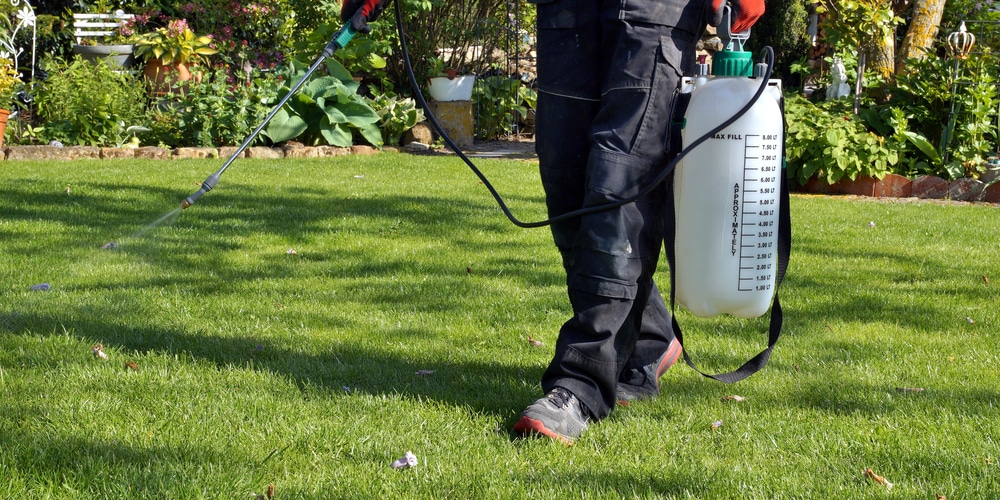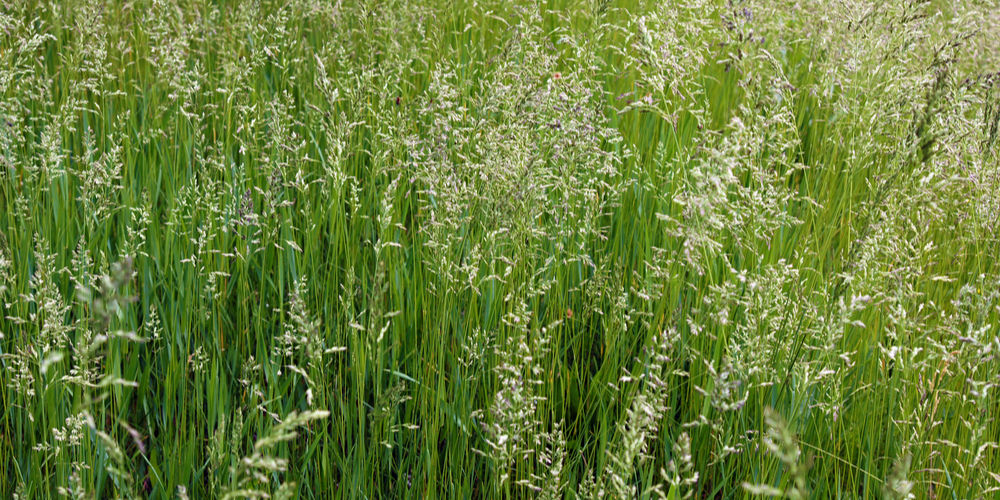Growing fescue isn’t as challenging as with other types of lawns. If you live in a hardiness zone between 5 and 7, planting this type of grass will be one of your best options. However, that doesn’t mean you won’t have to provide it with the necessary maintenance to thrive in your garden. Indeed, while being relatively easy to grow, this cool-season turf needs some attention from your side. For sure, regular and adequate watering is a crucial factor (as it is mowing).
Keeping weeds at bay and constantly monitoring your lawn for diseases are essential in maintaining it healthy. Applying a suitable fertilizer will make a considerable difference. To learn it all about how to take proper care of your lawn, you’ve landed in the right place. Here, we’ll go over how often to weed and feed fescue and how to make the most out of it.

With adequate care (and by following our recommendations), your lawn will be the envy of your neighbors! Besides committing to a regular watering schedule, you must also know when and how much to fertilize and apply herbicide to your lawn to keep weeds under control and have your grass grow healthy.
Read on to find out how to maintain your lawn the proper way! Of course, besides the tips we include here, you must pay attention to the location, soil type, and amount of sunlight your turf will receive! Like any other plant, grass needs oxygen, water, sun, and nutrients to engage in photosynthesis. The process, in turn, ensures the growth of your grass.
How Often to Weed and Feed Fescue
You should apply between three to four pounds of fertilizer every 1,000 square feet each year. You can divide this quantity into three applications: one in late winter, one in early spring, and the last in the fall. If you have grass in shady areas of your garden, you may have to switch to another fertilizer for those parts of your yard. Indeed lawn in the shade requires less nitrogen and more phosphorous to grow healthy.
For best results, begin fertilizing in the fall and continue until the spring. Use slow-release products to increase your chances of success. The best way to fertilize your lawn is to use dry, granular products suitable for your kind of grass. Avoid fertilizing in the hottest months of the year, as you may cause irreversible damage to your lawn. While fertilizers can do good, too much of them can be counterproductive. Excessive fertilizer will not make your grass brighter or healthier: instead, it might boost its growth and force you to mow it more often. Don’t forget to water your lawn after applying any product to limit the amount of stress.
Weed control for fescue requires regular mowing and the use of pre-emergent control products in the spring. Doing so will help prevent the formation of weeds and limit headaches in dealing with them later. Don’t forget to check and follow the label directions you find in the products you decide to apply to your garden. Avoid using pre-emergent weed control in the fall, as you might damage your lawn and make it more susceptible to diseases.
Additional Care
Besides following the tips we included in the previous section, keeping a healthy and durable lawn also includes additional care. For instance, you will have to monitor your grass for fungal infections. Indeed, fescue grass is susceptible to fungal diseases, especially during the hot months of the summer. If you live in a humid part of the country, you may encounter issues. To avoid problems, it is always best to take preventive action. Apply fungicide during the summer every two to three weeks. Do so when nighttime temperatures rise to 60F. Remember that prevention is always better than cure!
Contrary to other types of lawn, you won’t have to worry too much about thatch removal with fescue. However, that doesn’t mean your grass cannot become “thatchy” and display dried leaf debris in the summer. To solve the issue, rake heavily or use a commercial dethatching machine. Don’t forget to remove all debris. Failing to do so might make your lawn soggy and cause the spread of diseases.
How Often To Weed and Feed Fescue: Conclusion
AS you can see caring for a fescue lawn in the right climate is easy. You should give your grass enough fertilizer and water to help it thrive.
Related Article: Does Fescue Grow in the Shade?

